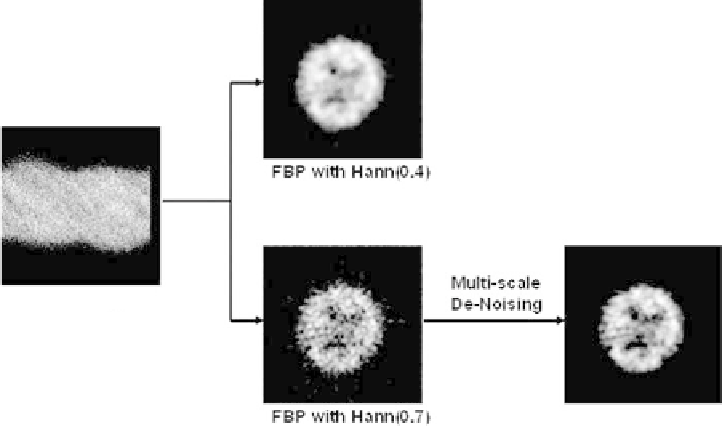Biomedical Engineering Reference
In-Depth Information
FBP with Hann (0.4)
Multiscale
Denoising
SPECT Sinogram
FBP with Hann (0.7)
Figure 6.19:
Illustration, on a clinical brain SPECT slice, of the combination
of multiscale denoising and traditional FBP with higher cut-off frequency to
improve tomographic reconstruction.
denoising scheme using three-dimensional wavelet expansion that integrates
edge information along continuous boundaries in 3D space. In three dimensions,
such integration can accurately separate anatomical surfaces from noisy com-
ponents that do not exhibit a directional pattern across adjacent tomographic
slices. Unlike traditional wavelet denoising techniques, thresholding was per-
formed on the modulus of the wavelet coefficients (“wavelet modulus”). A first
derivative of the cubic spline function was used for the wavelet basis function
which approximates the first derivatives of a Gaussian function and therefore
benefits from the following properties:
1. By the uncertainty principle [14], the Gaussian probability density function
is optimally concentrated in both time and frequency domains, and thus is
suitable for time-frequency analysis.
2. Derivatives of Gaussian function can be used for rotation-invariant pro-
cessing [67].
3. The Gaussian function generates a causal (in a sense that a coarse scale
depends exclusively on the previous finer scale) scale space. This makes
scale-space “tracking” of emergent features possible [68].



